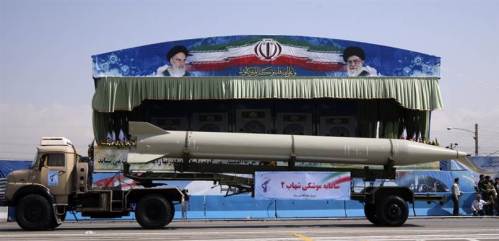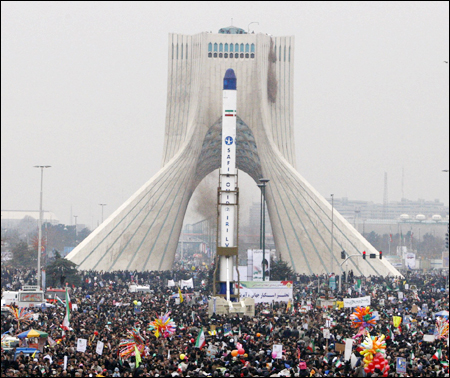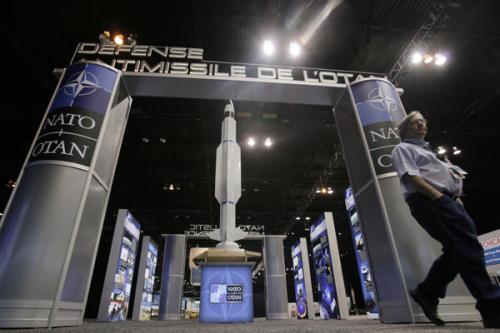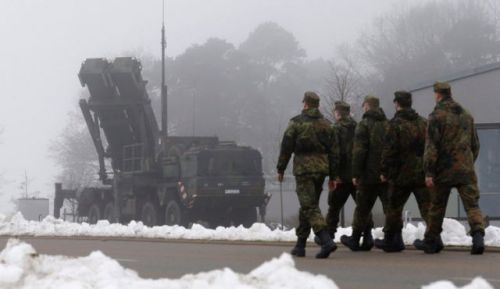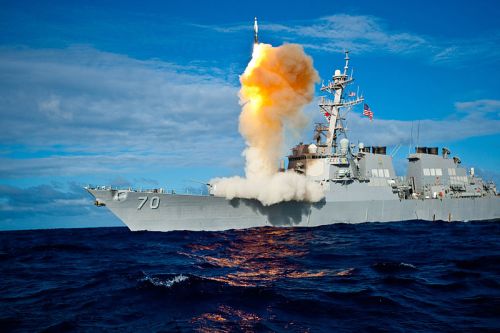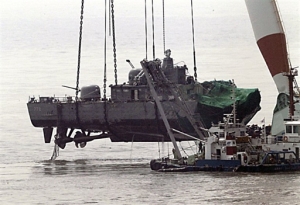The following is Part II of an article I wrote for the May 2013 issue of Atlantic Voices, a monthly magazine published by the Atlantic Treaty Association.
Future Threats: The Middle East Post-Arab Spring
NATO’s missile defense plans have evolved with the changing geopolitical landscape. Despite past successes in meeting the changing missile defense needs of NATO, such as responding to the Iranian threat instead of Russia, or aiding Turkey with a rapid deployment of PAC-3s, the Alliance needs to maintain a watchful eye on potential future threats.
Keeping a focused eye on the horizon may be more difficult now that it has ever been in recent memory. In addition to budgetary pressures facing NATO members’ armed forces, the geopolitical environment is extremely murky. The Arab Spring has given hope to millions across the Middle East, but it has also been a cause for concern. Although the civil war in Syria may result in a peaceful situation with a state that would, unlike President Assad’s regime, be a partner with the West the path to that point has been anything but smooth for Turkey and other NATO members and partners.
Looking beyond Syria, the picture becomes no clearer. Egypt is currently in the hands of what has so far been a responsible government, led by the Muslim Brotherhood. Despite the Brotherhood’s political achievements and ability to calm rattled Western nerves, the fall of President Hosni Mubarak has opened the gates of the Sinai Peninsula to armed groups that have launched repeated rocket (and terrorist) attacks against Israel and Jordan. Egypt serves as an example of what well-intended governmental change can bring. Failed states, or even failed regions, can bring widespread instability and violence to regional neighbors, as is seen on the Sinai-Israel border and the Syrian-Turkish border.
Whereas the Egyptian Sinai may be an example of the potential complications of the Arab Spring for neighboring states, Israel is an example of what NATO’s European members should emulate regarding rocket and missile defensive capabilities. Israel has had the unenviable position of having to protect its armed forces and populace from rockets (from Gaza, Sinai and Hezbollah in Lebanon), short and medium range missiles (from Syria and Iran), and long range missiles (Iran). Despite the myriad of rockets and missiles facing Israel, it has developed systems to defend against all of these threats (except for the crude Qassam rockets launched from terror groups in Gaza).
Iran’s Current and Future Threats
Iran currently has several missiles of varying ranges, and is pushing towards technologies that will increase the country’s missile program’s reach deeper into Europe and possibly across continents.
The operational missiles in Iran’s arsenal are the Shehab-3 and Shehab-3 Extended Range missiles, with a range of 1,300 and 2,000 km, respectively. The Shehab-3 can send a one-ton warhead to parts of southern Europe.[i] Also, after years of speculation amongst the missile community, it was eventually confirmed that Iran also obtained nineteen BM-25 missiles from North Korea. The BM-25 is a modified Russian missile with a range of almost 4,000 km, putting European capitals as far as Berlin (and Moscow) within range. This missile is also powerful enough to carry a nuclear warhead, although Iran is not known to possess the ability to make a small enough nuclear warhead to fit atop a missile.
The inclusion of the BM-25 in Iran’s arsenal is worrisome, however the real issue with the Iranian possession of such a missile is its ability to use the technology found within its more powerful boosters to advance its missile program. Iran has already displayed the ability to successfully launch more powerful rockets, including the deployment of a small satellite in 2009. The satellite was based off of the Safir rocket, which represents a more sophisticated class of rocket than Iran had displayed in the past. Its engines are based off of Russian technology and provide about 40% more lifting force than Iran’s kerosene-fired engines found in its other missiles.[ii] But the most significant news about Iran’s ability to orbit a satellite is the marriage between satellite technology and inter-continental ballistic missile programs. Russian and US ICBMs have their origins in space rocket technology. Iran was even able to launch its space rocket by using the Shahab missile launchers as the launch platform. By piecing the various components of Iran’s space and missile program together, Iran may not be far off from possessing an ICBM.[iii] Some predict Iran will have ICMB capabilities by 2015.[iv]
In addition, it has also been reported that Iran obtained several KH-55 cruise missiles from Ukraine.[v] These missiles act like low flying airplanes and do not take a ballistic trajectory, thus requiring a different mechanism of interception than those that are used to counter ballistic missiles. These cruise missiles can be launched from a large aircraft or ship, both of which require difficult, yet obtainable engineering adaptations. A cruise missile outfitted on a ship or airplane could be launched from beyond the confines of Iran, threatening Europe and even the US.
The nuclear-capable KH-55 has a range of 3,000 km and is an example of why NATO needs to maintain a flexible and fluid approach to missile defense. Iran will continue to develop its missile program, expanding on existing missile platforms such as the BM-25, Safir rocket and KH-55 cruise missile. And as noted above, the Middle East is a difficult place to make political predictions. A strong, stable autocrat can give way to a less friendly government with little warning. While national ballistic programs take some time to develop, so do missile defense systems. Using Israel as example, it took that country over ten years to deploy its BMD system after sustaining 39 Scud missile attacks in the Gulf War. For Europe, the final stage of the EPAA is not planned to be completed until 2021. NATO will need to constantly reevaluate its ABM plans in order to stay ahead of the various threats it may face.
Watching Asia
Although half a world away, the tensions on the Korean peninsula are of great importance to NATO’s North American and European members, as well as its “partners across the globe,” such as Japan and South Korea. North Korea has been a major catalyst of missile technology proliferation to several states. Iran has been a major recipient of this illegal trade. Iran’s Shehab-3 is very closely designed off of North Korea’s No Dong 1 missile.[vi] In addition, Iran obtained the BM-25 missiles from North Korea, as noted above. The relationship has been strong and represents a rare trade corridor for these isolated states.
North Korea has intermittently tested its missiles, including the intermediate range Taepo Dong 1 and 2 missiles, and launched a satellite into space in December 2012. The US Navy was able to recover part of the rocket that launched the satellite, giving intelligence analyst useful insight into the North Korean missile program that they have not had before. The Defense Intelligence Agency released a classified assessment in March 2013 that it believes with “moderate confidence” that the “North currently has nuclear weapons capable of delivery by ballistic missiles however the reliability will be low.”[vii] These tests, along with a North Korean test launch of three short-range missiles in mid-May 2013, have raised the concerns of Japan, South Korea, and the US. President Obama recently announced that the US would place Ground Based Interceptors in Alaska and California in order to counter the growing North Korean threat. Japan also responded to North Korea’s saber-rattling by deploying PAC-3 missiles in Okinawa and Tokyo, signing a $400 million deal with Lockheed Martin to upgrade its existing Aegis system, and deploying Japanese and US warships equipped with the Aegis system in the Sea of Japan and Korean peninsula, respectively.[viii]
The cooperation between the US and Japan and the US and South Korea is an example of rapid ABM mutual assistance, which is facilitated by the more abundant ABM systems in existence today. The developments in Asia, along with Turkey’s acceptance of PAC-3s from its NATO allies, are two examples of NATO members and partners creating deterrence against regional missile threats. This form of mutual assistance, coupled with cooperation with Russia, must continue as the threats against NATO continue to evolve. The threat from Iran will only grow as that nation gains more technological prowess and continues its push towards nuclear weapons. The stakes will only rise and NATO will need to continue to adapt and strengthen its anti-ballistic missile systems to meet these dangerous challenges.
Therefore, NATO needs to pursue a strong enough missile defense policy that can respond to current missile threats, but be flexible enough to deal with upcoming challenges. The future threats that NATO will face will change, whether a current foe obtains new missiles that threatens the continent, or new danger zones are created in areas that were once stable or safe. Some tangible threats on the horizon are an indigenous Iranian missile program that will expand its Shehab missile program and upon the BM-25 platform. Iran will try to continue to trade with North Korea, which will continue on the path towards nuclear warhead miniaturization and increased rocket strength, as seen in its satellite launch last year. Finally, just as the Iranian and North Korean threat grows as a part of their cooperation, NATO can also get assistance from other partners. Linking NATO’s early warning system with regional radar operators, such as Russia, the states of the Gulf Cooperation Council and Israel will expand Europe’s vigilance and solidify a meaningful and strong regional cooperation revolving around missile defense.

